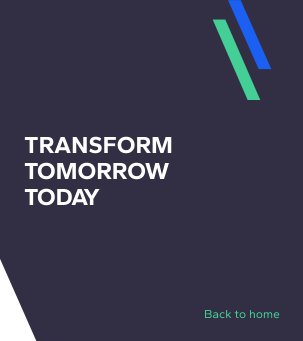Zigurat Global Institute of Technology
Blog / Leadership & Transformation
Digital Transformation vs Digital Optimization
Categories

“Our digital aspiration is to improve hospital efficiency and services.” vs “Our digital aspiration is to create a virtual Hospital to be able to serve remote customers.”
2. Digital Speed. The business should define the speed with which the new paradigms are expected to be adopted. It will condition investments and executive support, by adding foreseen deadlines and milestones to their digital aspirations:“Our digital aspiration is to improve hospital efficiency and services by reducing the operating costs by 25% in the 3rd year and increasing 2x customer satisfaction in the same period of time.” vs “Our digital aspiration is to create a virtual Hospital to be able to serve remote customers, we want 25% growth in customers and 40% of customers being served remotely by the third year.”
3. Risk Appetite. The business should clearly define which level of risks —financial, regulatory, reputational— they are willing to take in this journey. Again, having them in writing will help to define the right strategy:“We will not put the health of our customers at risk under any circumstance,” means, don’t mess with our patients in any way. vs “We are willing to explore how the new regulations will need to be formulated to accommodate new legal paradigms of remote healthcare,” means, we have lawyers ready to take on potential social or government discomfort.
Technology teams will clearly understand the possibilities and uses of new technologies if these statements are clear and promoted from the top. As we can see in the example, the ambition will define if we do Digital Optimization or Digital Transformation by creating NEW REVENUE and NEW BUSINESS MODELS on top of the ones that the business had before. Technology teams will clearly understand the possibilities and uses of new technologies if these statements are clear and promoted from the top. As we can see in the example, the ambition will define if we do Digital Optimization or Digital Transformation by creating NEW REVENUE and NEW BUSINESS MODELS on top of the ones that the business had before.So, in order to do digital transformation, we must understand what do we really want to do, what is our digital goal. As you can imagine, this is not just a top-down exercise where technology leaders have to sit and wait for the board to ask for their help. Instead, the technological leadership must have a seat on the board and explain, evangelize, show examples and possibilities to the executives who, may or may not necessarily know what are the real possibilities and technological enablers they can use. So, without their voice on the board, the business will not be able to articulate these sentences!Examples of Digital Optimization can be:- Improving existing revenue: using Analytics to reduce costs.
- Reducing costs: using 3d printing to reduce production and storage costs for rare products.
- Improving employee productivity: Using RPA (Robot Process Automation) to automate manual tasks.
- Selling digital assets: selling competitive algorithmic analysis as a service to competitors or other partners.
- Creating new digital products: selling virtual services fed by robotics and AI, for example, a virtual nurse.
- Use existing digital assets to serve a different industry.
So if you’re interested in moving from Digital Optimization to Digital Transformation, take a step further!
Martin Piqueras Professor of the Global MBA in Digital Business Business Director & Technology Leader at Aqualogy Business Software



